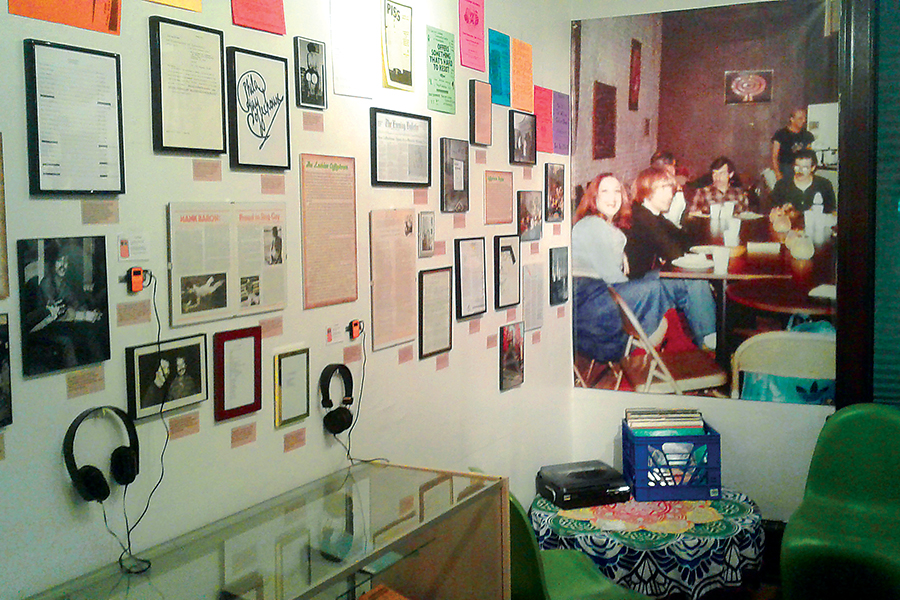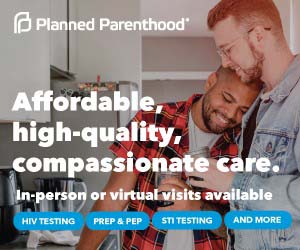It’s hard to imagine a coffeehouse today running on such a small budget that all the workers are volunteers, all the baked goods are brought from home and all the furniture is either found or donated. But in the 1970s and early ’80s, that’s how the gay and lesbian coffeehouses of Philadelphia survived — on the hard work and dedication of the gay community and its drive to create a safe space.
“You could buy a cup of coffee for a quarter,” Tom Wilson Weinberg said. “You could just sit there and be with your friends. There was no pressure to buy anything, no pressure to leave. It was a safe, warm, welcoming place to go. It was a lovely environment.”
The Philadelphia Gay Coffeehouse, which opened in 1973, was not just a coffeehouse — it was a community center. It was a gathering place for political meetings, lectures and a space for events like poetry readings, plays and musical performances.
From 7-9 p.m. Dec. 14, the William Way LGBT Community Center will host “Cup of Good Cheer: A Winter Evening Coffeehouse of Song & Verse,” which seeks to recreate and pay homage to the coffeehouse era. The event celebrates the more-than 10 years of gay and lesbian coffeehouses in Philadelphia and will bring back performers such as Wilson Weinberg. There will also be an open-mic portion of the evening for poetry, music and more.
The event runs in conjunction with the current William Way exhibit “Something’s Brewing: History of the Gay & Lesbian Coffeehouse in Philadelphia.”
John Anderies, William Way archivist and curator for the exhibit, is excited for the event and exhibit to celebrate the coffeehouse history.
“I think there’s a wonderful kind of casual atmosphere about the coffeehouses,” Anderies said. “It’s a great opportunity for people to come together and learn more about each other, meet each other and be supportive of one another in the community. This is a venue that doesn’t really exist anymore in the community, so it’s nice to pay a nod and do our best to revisit that.”
The exhibit began to manifest back when Anderies started working at William Way two years ago. He was doing inventory when he found a box of cassette tapes from old coffeehouse performances with people’s names on them, like Hank Baron and Pink Debbie. Anderies wondered who they were and, as he gradually started learning more about the history of the coffeehouses and began to connect with the regular performers of the time, the exhibit came to life.
“I knew it would be a rich experience to recreate the coffeehouse physically and to tell the different stories of the people who performed there. Even though it was just called the gay coffeehouse, it was meant to encompass everything.”
The exhibit, which runs until Jan. 27, features a small coffee counter, a piano, tables with chairs and walls filled with large photographs of the original coffeehouses, poems, fliers and many other artifacts from the era. The texts in the exhibit detail the history and transformation of the coffeehouses through the years. Anderies, in conducting an immense amount of research for the exhibit, found the women’s stories and the lesbian coffeehouses particularly interesting.
“For various reasons, women’s stories still remain somewhat untold,” Anderies said. “Partially, sort of the nature of the LGBTQ community is that the public face has been about the white man, but the women were such an important part of the community. Particularly, the women felt the power structures being male-dominated, and they felt the need to establish their own spaces. In general, the women’s story is not told as much, or hasn’t been told, and I found that fascinating, realizing that I could shed some light on it. It’s also a story for the women to tell themselves, so hopefully there will be more of that as well.”
The gay and lesbian coffeehouses were not only safe spaces for community members, they offered an alternative to the gay bars, which some at the time felt were repressive.
“One of the things that was special about the coffeehouse was that, other than Giovanni’s Room, which had just been founded before the coffeehouses, there were very few alternatives to the gay bars, especially to socialize,” Wilson Weinberg said. “The gay bars were the only game in town, so the coffeehouses provided an environment for people who didn’t want to be in a place where drinking was the main activity.”
The coffeehouses also offered a space where patrons could experience performances that were purposefully gay-centered. Wilson Weinberg remembers auditioning in front of a small committee in order to get to perform at the coffeehouse. His music combined the political with the comedic, and his lyrics were explicitly gay. A pianist auditioned before him and played a few classical pieces.
“The pianist gave me a ride home after the audition, and he said that he thought my songs were funny, but that he was embarrassed by the lyrics,” Weinberg said. “I realized then that I could understand where he was coming from. We all listened to songs growing up about guys and girls and heterosexual love, but I think maybe it was jarring to hear gay lyrics.”
While many of the performers were folk singers, there were all kinds of musicians, and popular songs of the time were often performed. Not all the pieces were explicitly gay, but the coffeehouses created a space where gay lyrics, poems and plays were accepted and celebrated.
“The coffeehouses were of their time,” Anderies said. “It wasn’t all folk music, but in the community it may have run its course. Sometimes I think we’re very event-focused; you hear about an event, you show up, you experience it and you move on. In that way, the regularity of the coffeehouse, where you knew you could just drop in any time, is less available today.”
Even though the gay and lesbian coffeehouses of Philadelphia no longer exist, their history is still important, and the idea of safe spaces in the LGBT community remains relevant.
“A lot of people are saying, and it is a valid point, ‘We don’t need queer spaces as much as we used to,’” Wilson Weinberg said. “The bars tend to be more integrated, and the climate has been pretty comfortable to go wherever we want and we don’t have to pretend to be otherwise. But I still think queer spaces and safe spaces are important, especially for queer people of color and transgender people.
“I don’t think we have yet reached a place, nor do I think I want us to, where we outgrow those spaces. I think that it’s important to have spaces that belong to us still today.”
If you have stories or experiences you’d like to share from the coffeehouse era, or to learn more information, email [email protected]. For more information about the exhibit, visit www.waygay.org.

